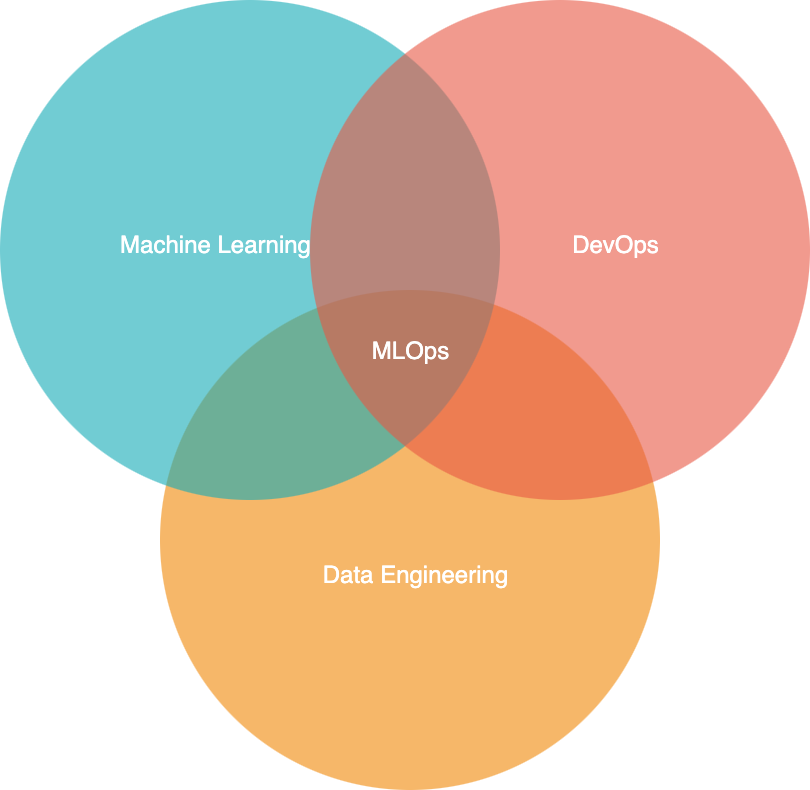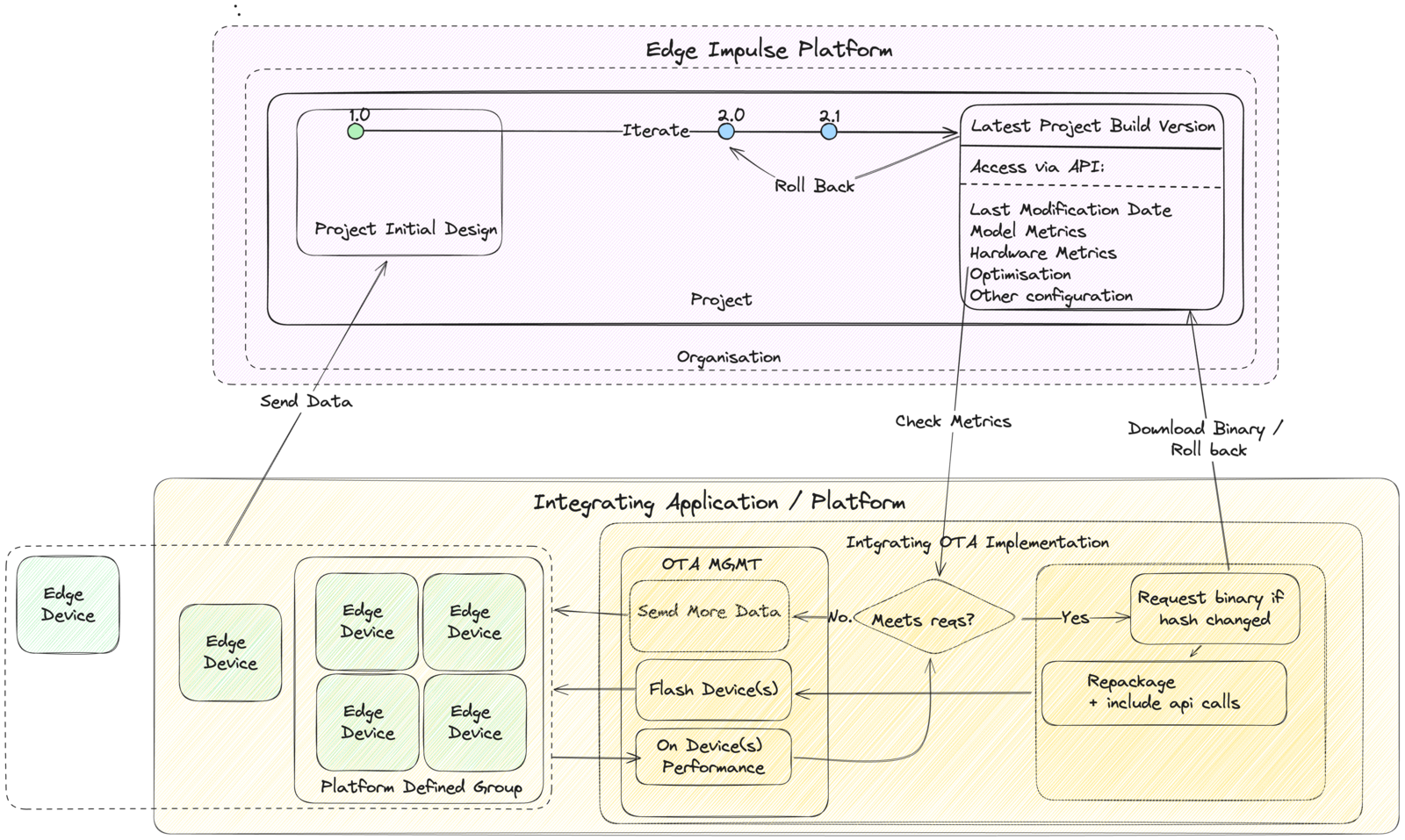MLOps
MLOps is a set of practices that combines Machine Learning, DevOps, and Data Engineering. The goal of MLOps is to streamline and automate the machine learning lifecycle, including integration, testing, releasing, deployment, and infrastructure management.\
MLOps Venn Diagram
Continuous Integration, Continuous Deployment and Continuous Learning
Continuous Learning is a key concept in the domain of Machine Learning Operations (MLOps), which is a set of practices that combines Machine Learning, DevOps, and Data Engineering. Here is an example of the process:
Continuous Learning Sample Architecture